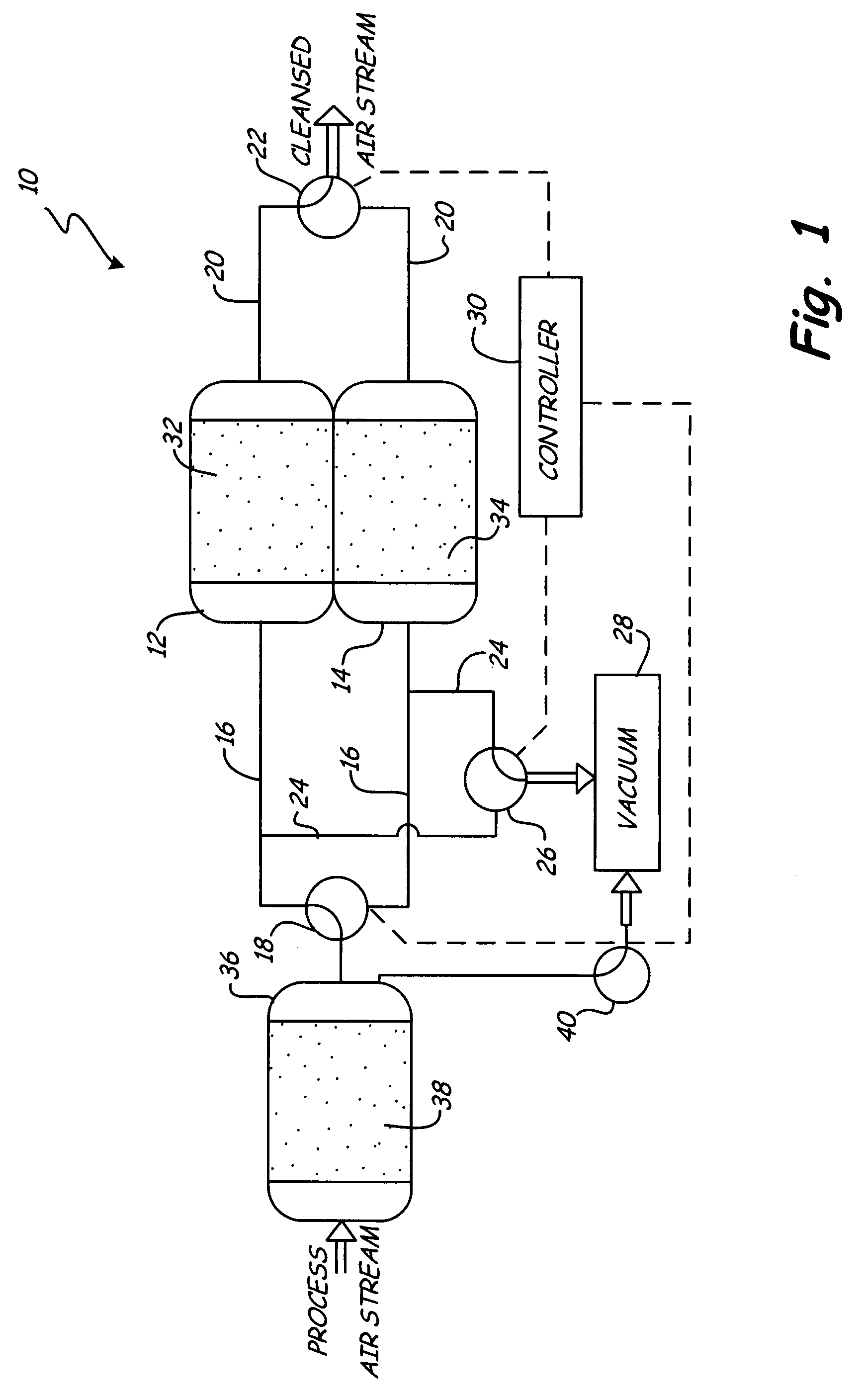Thermally linked molecular sieve beds for CO2 removal
a molecular sieve bed and molecular sieve technology, applied in the direction of separation process, dispersed particle separation, chemistry apparatus and processes, etc., can solve the problems of carbon dioxide exposure, harmful to the health of humans and other mammals, negative effect of adsorption isotherms,
- Summary
- Abstract
- Description
- Claims
- Application Information
AI Technical Summary
Problems solved by technology
Method used
Image
Examples
Embodiment Construction
[0007]The sole FIGURE shows a schematic view of carbon dioxide (CO2) removal system 10. CO2 removal system 10 operates substantially isothermally and approximately at ambient temperature and allows an increase in the effective loading of CO2 during the adsorption process. CO2 removal system 10 generally includes a first sorbent bed 12, a second sorbent bed 14, inlet passage 16, inlet valve 18, outlet passage 20, outlet valve 22, carbon dioxide passage 24, carbon dioxide valve 26, vacuum 28, and controller 30. First and second sorbent beds 12 and 14 are thermally linked and heat is transferred between them. The heat extracted from one, adsorbing sorbent bed is used as energy to regenerate the other, desorbing sorbent bed. Because a portion of the energy required for regenerating CO2 removal system 10 is provided by heat transfer between the adsorbing sorbent bed and the desorbing sorbent bed, the overall regeneration power requirement of CO2 removal system 10 is reduced. In an exempl...
PUM
| Property | Measurement | Unit |
|---|---|---|
| adsorption | aaaaa | aaaaa |
| temperature | aaaaa | aaaaa |
| pressure | aaaaa | aaaaa |
Abstract
Description
Claims
Application Information
 Login to view more
Login to view more - R&D Engineer
- R&D Manager
- IP Professional
- Industry Leading Data Capabilities
- Powerful AI technology
- Patent DNA Extraction
Browse by: Latest US Patents, China's latest patents, Technical Efficacy Thesaurus, Application Domain, Technology Topic.
© 2024 PatSnap. All rights reserved.Legal|Privacy policy|Modern Slavery Act Transparency Statement|Sitemap


